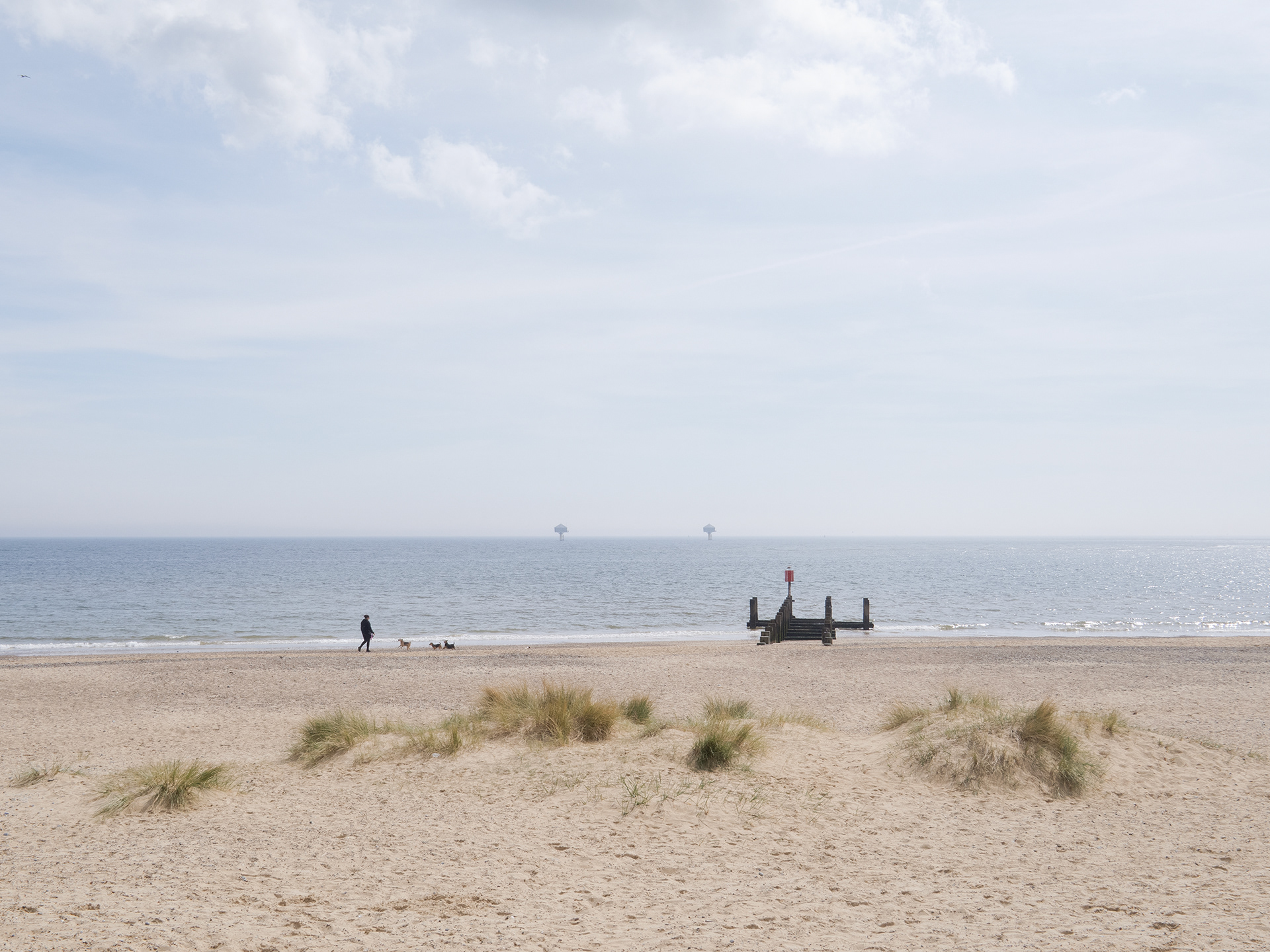
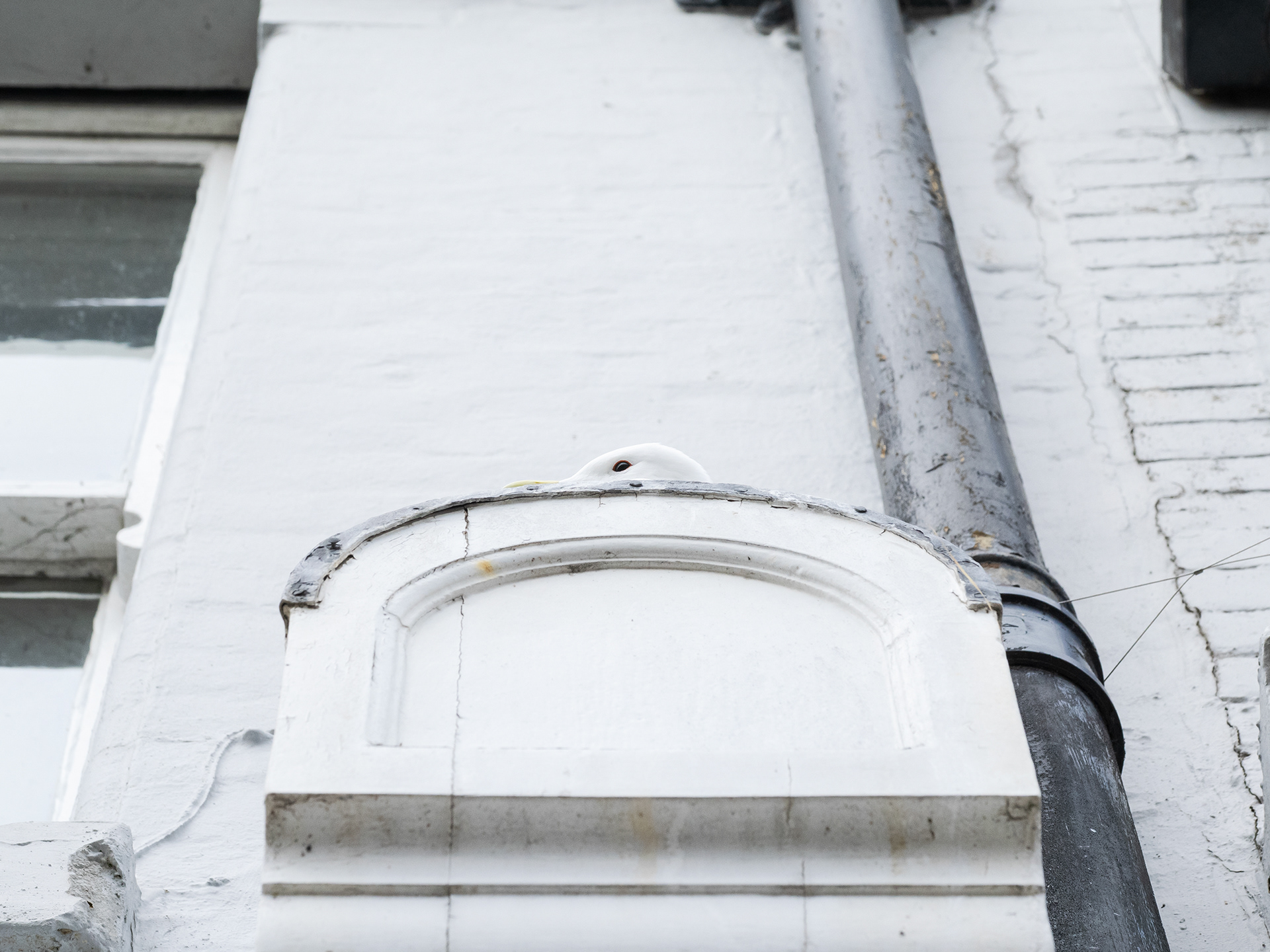
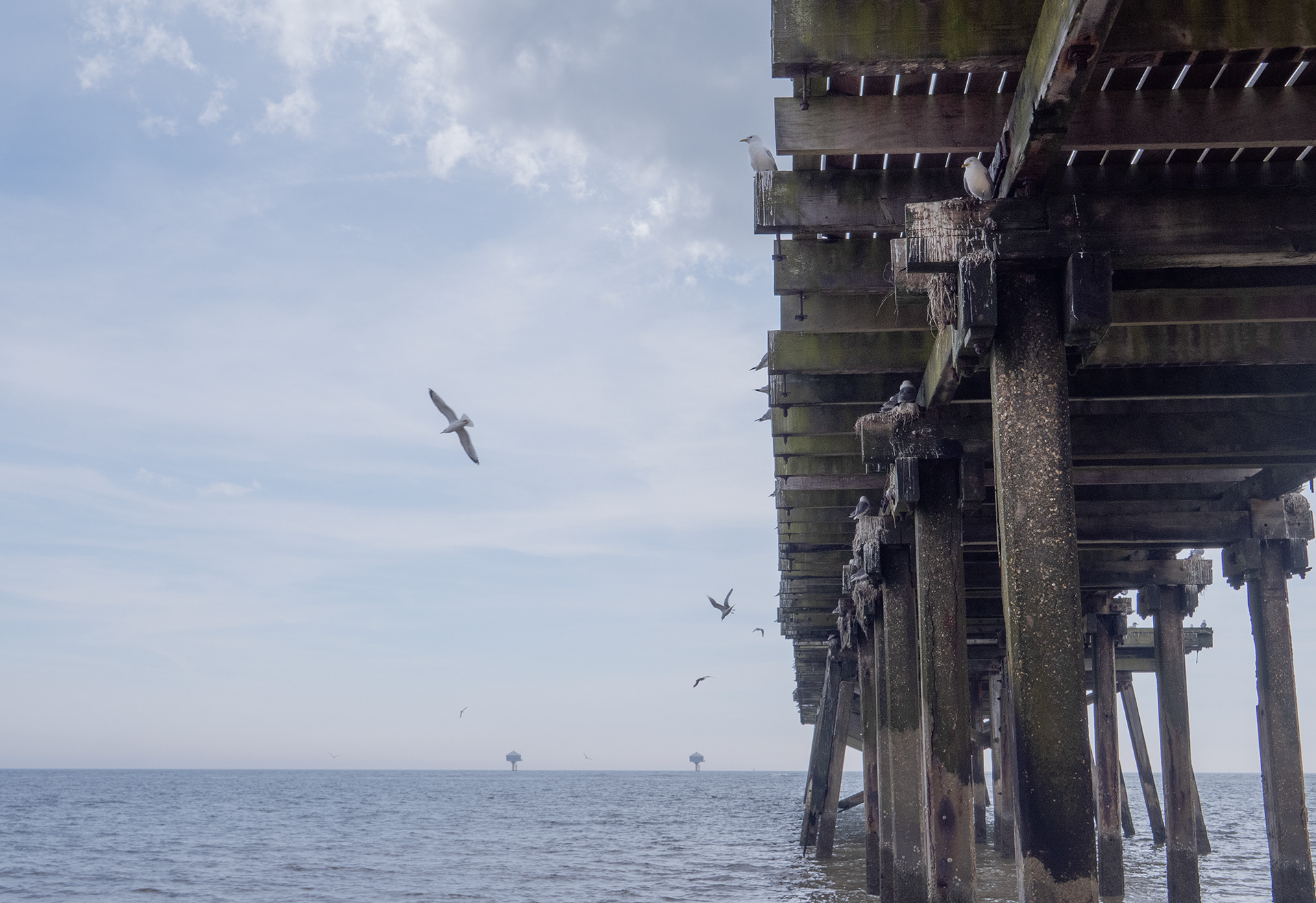
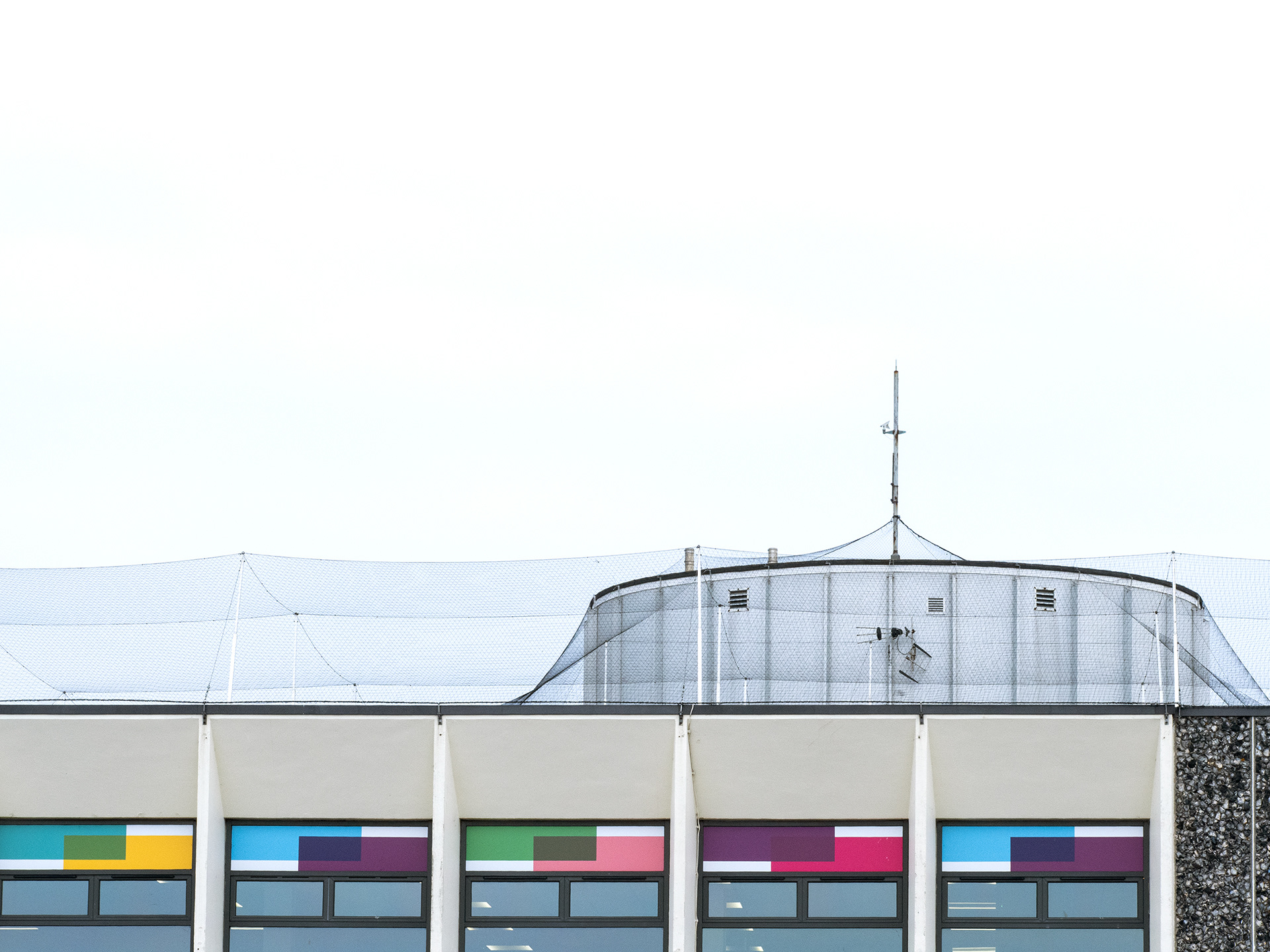
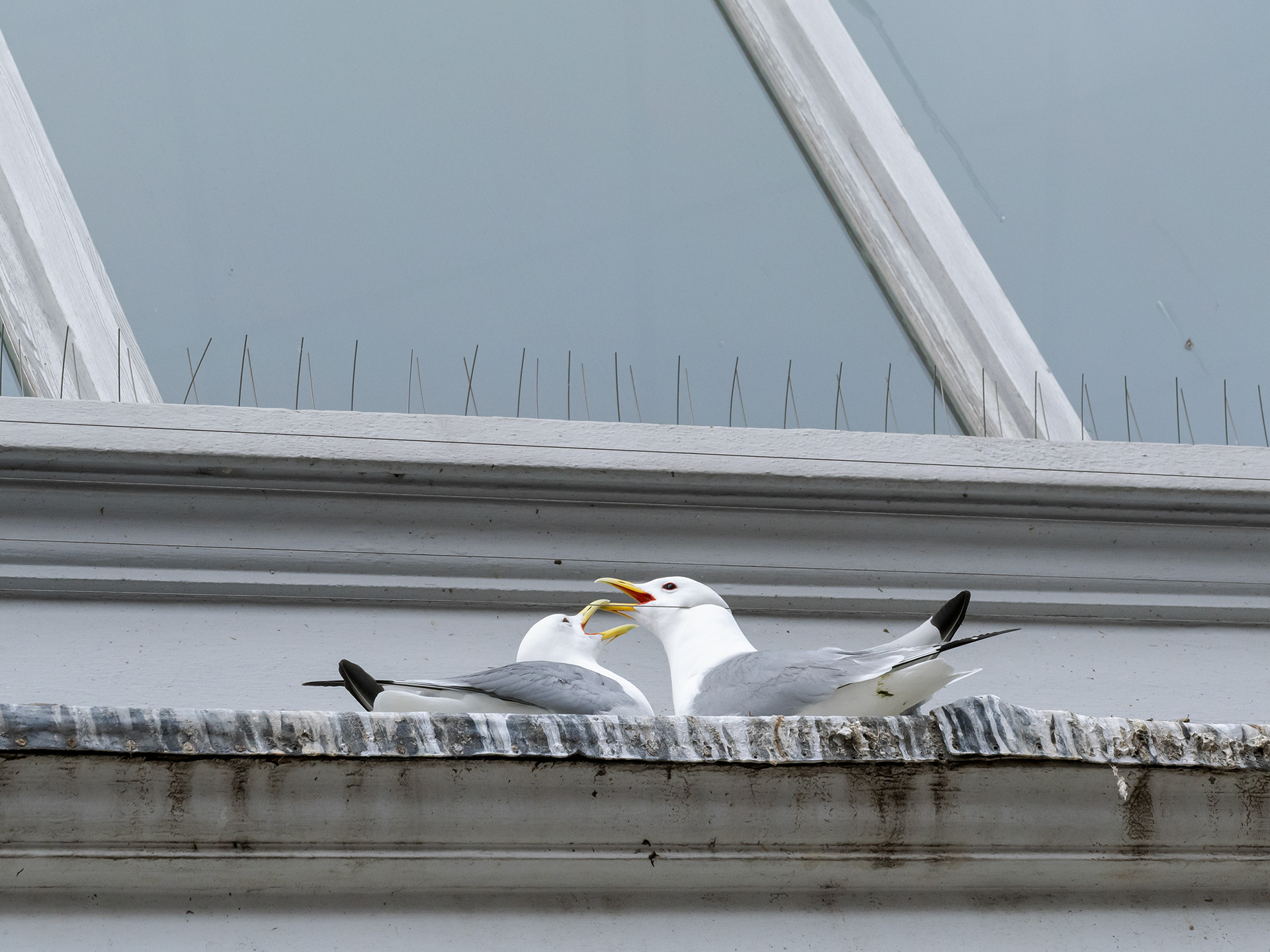
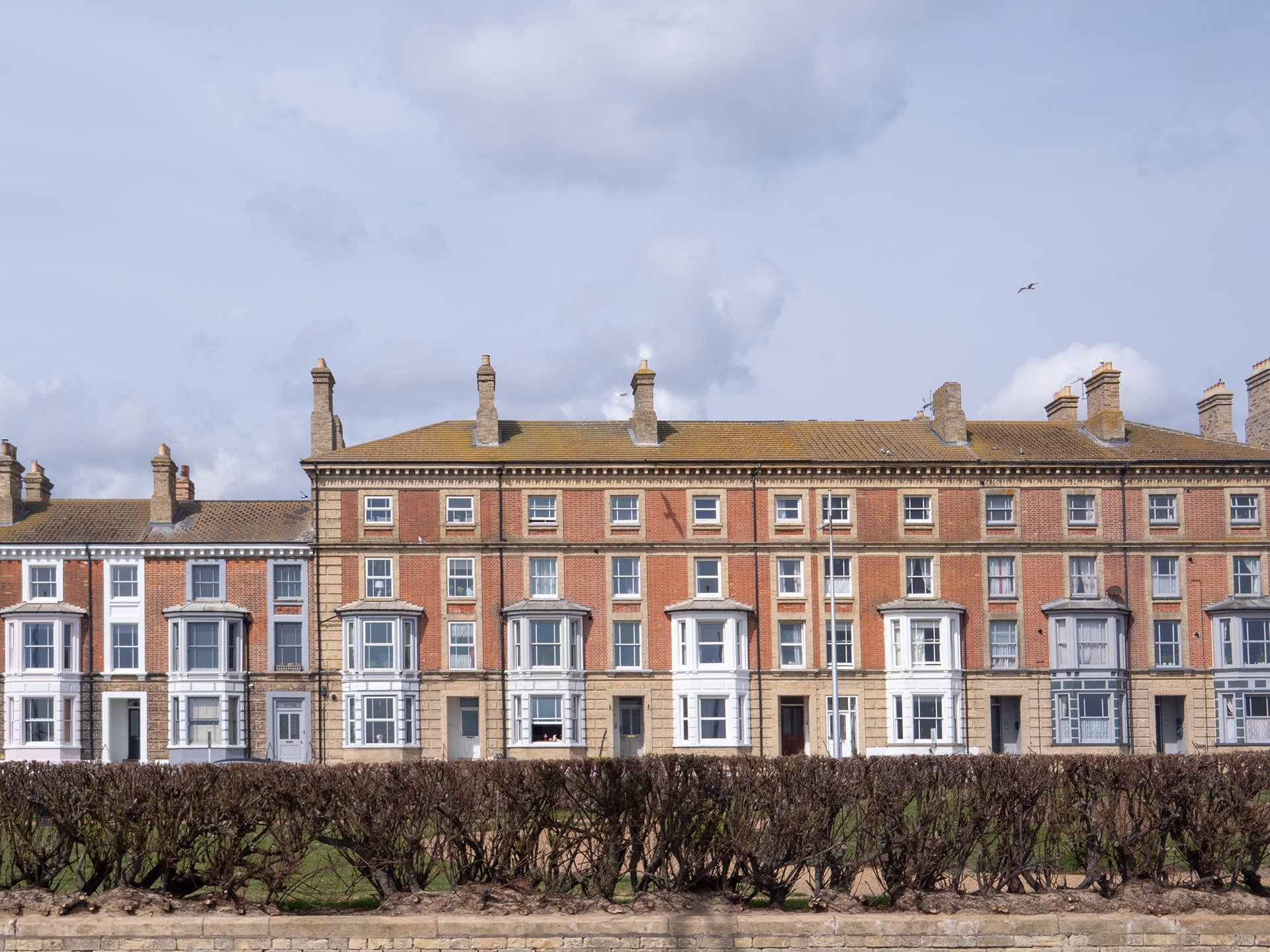
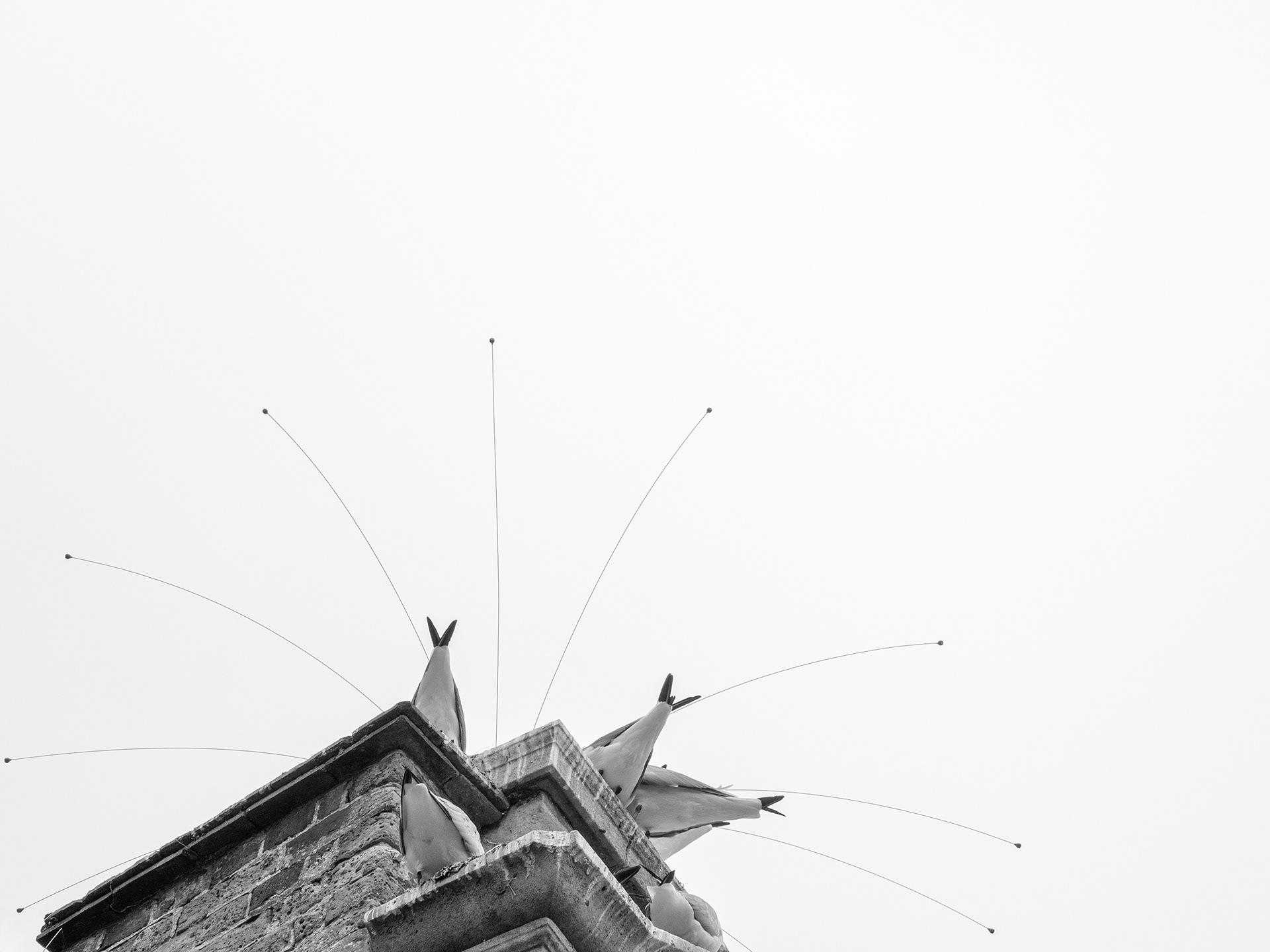

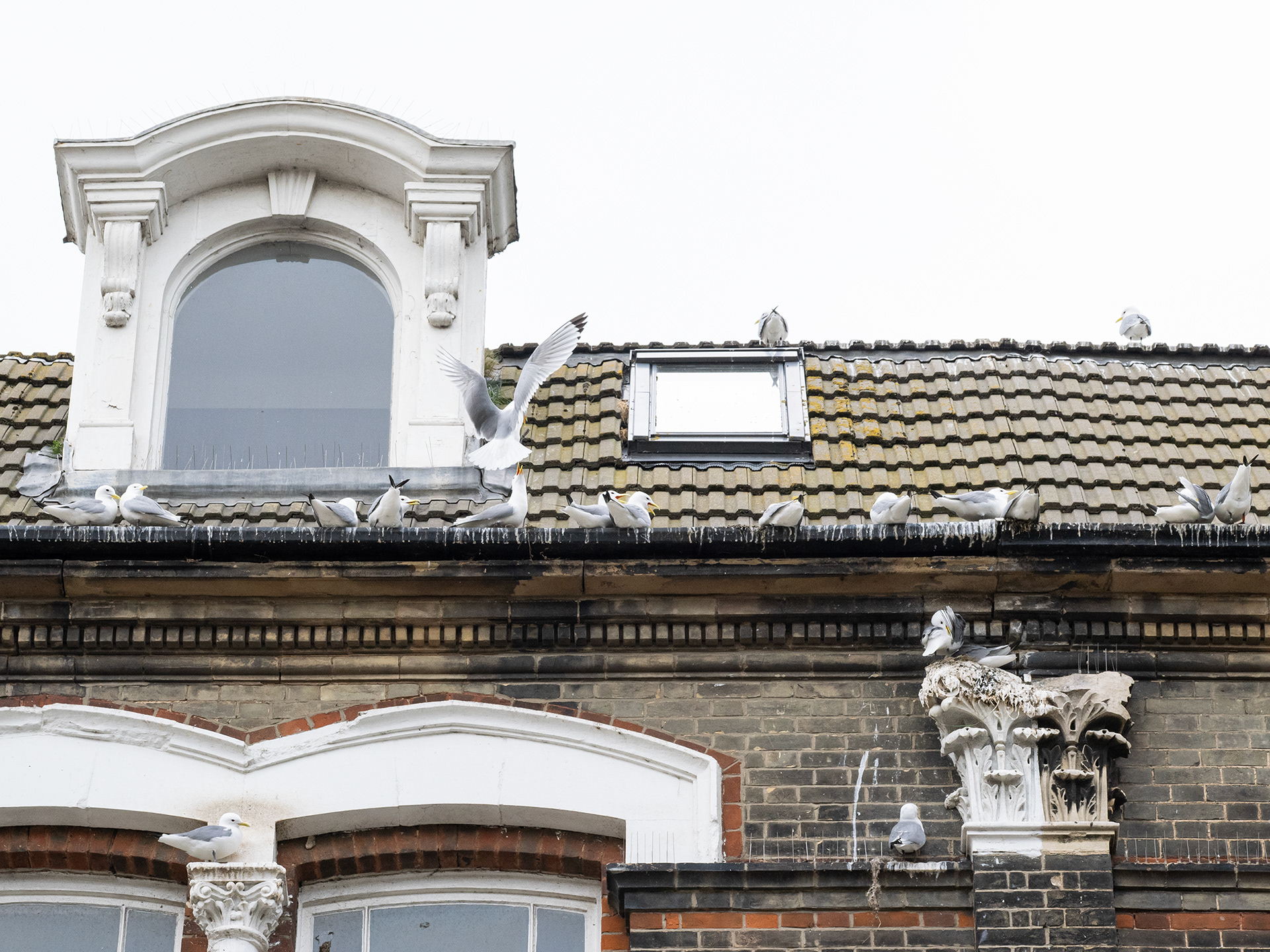
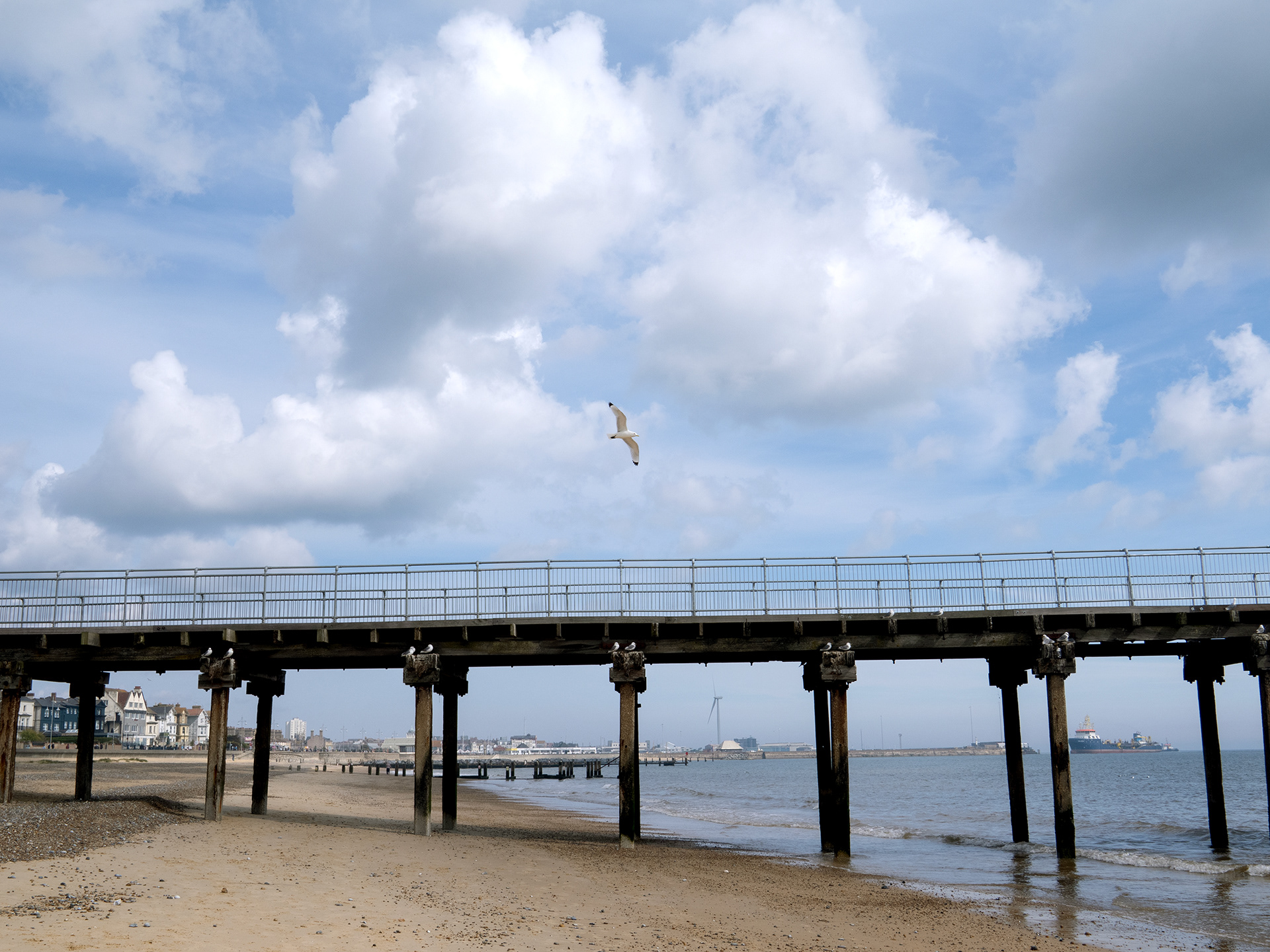
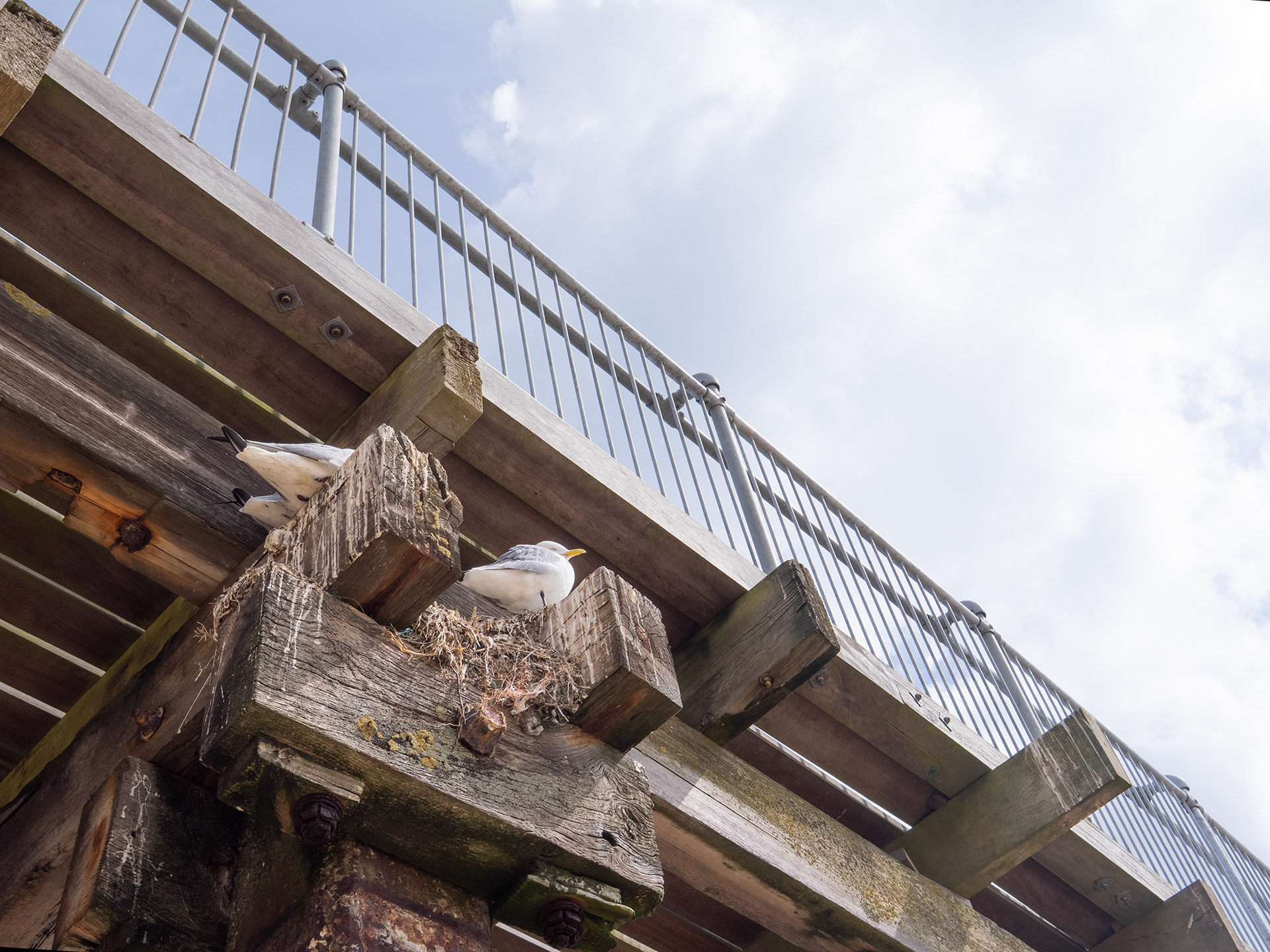
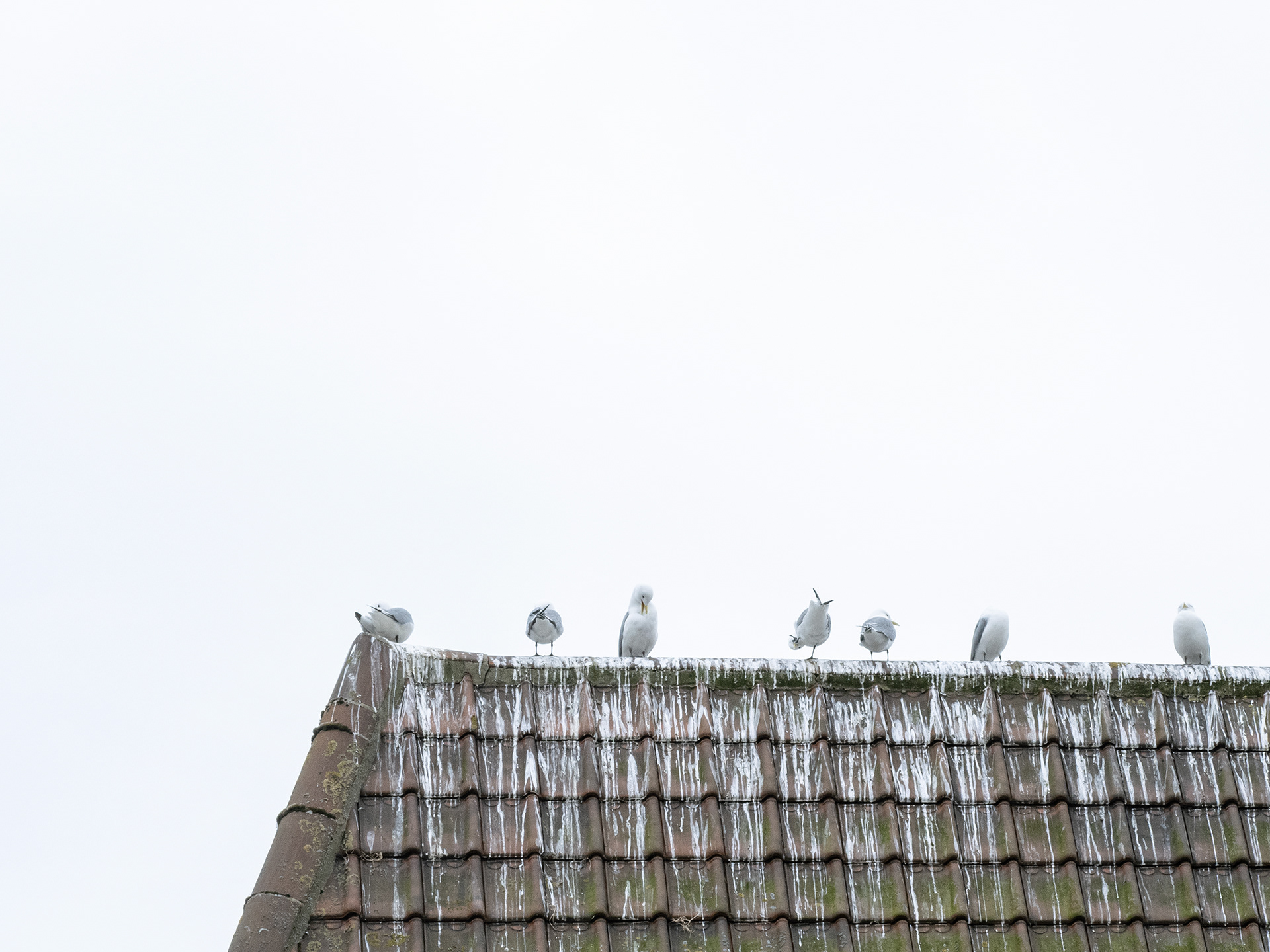

The Lowestoft Kittiwakes is an ongoing project which began in April 2025, documenting the co-existence of human residents and a Kittiwake colony in a port town on the Suffolk coast. The Kittiwake is a species of gull, by nature pelagic; it spends much of its life out at sea, feeding on fish and marine crustaceans, coming to our coasts in spring and summer to breed on cliff tops and rocks. There are around 380,000 breeding pairs of Kittiwakes in UK waters. Monogamous for life, pairs return to the same spot to breed every year, aggregating in colonies that can become extensive if space allows. Kittiwakes are not synanthropic by nature; they tend to stay away from humans and human habitation; however, since the 1950s, the port of Lowestoft has been home to a steadily increasing migrant population of breeding pairs who - unusually comfortable in the presence of humans - have established nests all over town, sometimes in the most unlikely places.
Lowestoft - like most seaside towns - is subject to population swellage in the summer as tourists head for the beaches and holiday accomodation. The influx of avian visitors is not welcomed by all. Many residents and business owners are faced with tackling the large quantities of faecal matter generated by Kittiwakes that nest on the building facades that line the high street; the smell and sight of which can be somewhat overwhelming. All over town, anti-bird measures are in place; spikes, netting that aim to deter the gulls, but can also trap and even kill them. Many residents, however, are happy to share their town with these endangered birds and accept the need to co-exist with nature. A 40% decline in numbers since the 1970s has resulted in the Kittiwake being made a protected species. Suffolk Wildlife Trust, the RSPB and local councils, business forums and members of parliament have formed the Lowestoft Kittiwake Partnership. The aim of the partnership is to afford Kittiwakes a continuing safe space to nest in Lowestoft, simultaneously supporting businesses and building owners through the issues of sharing their spaces with these protected birds.
In 2023 work was completed on two purpose-built, nearshore ‘Kittiwake hotels’, a kilometre off Lowestoft, as an alternative to -in-town’ nesting. It will be a slow transition, due to each pairs’ loyalty to established breeding spots; however the hatching of the first chick hatched on one of the structures last year means that a gradual transition could be underway. In the meantime, the Lowestoft Kittiwakes continue to return to the town every spring; an extraordinary example of adaptation in our urban wildlife.